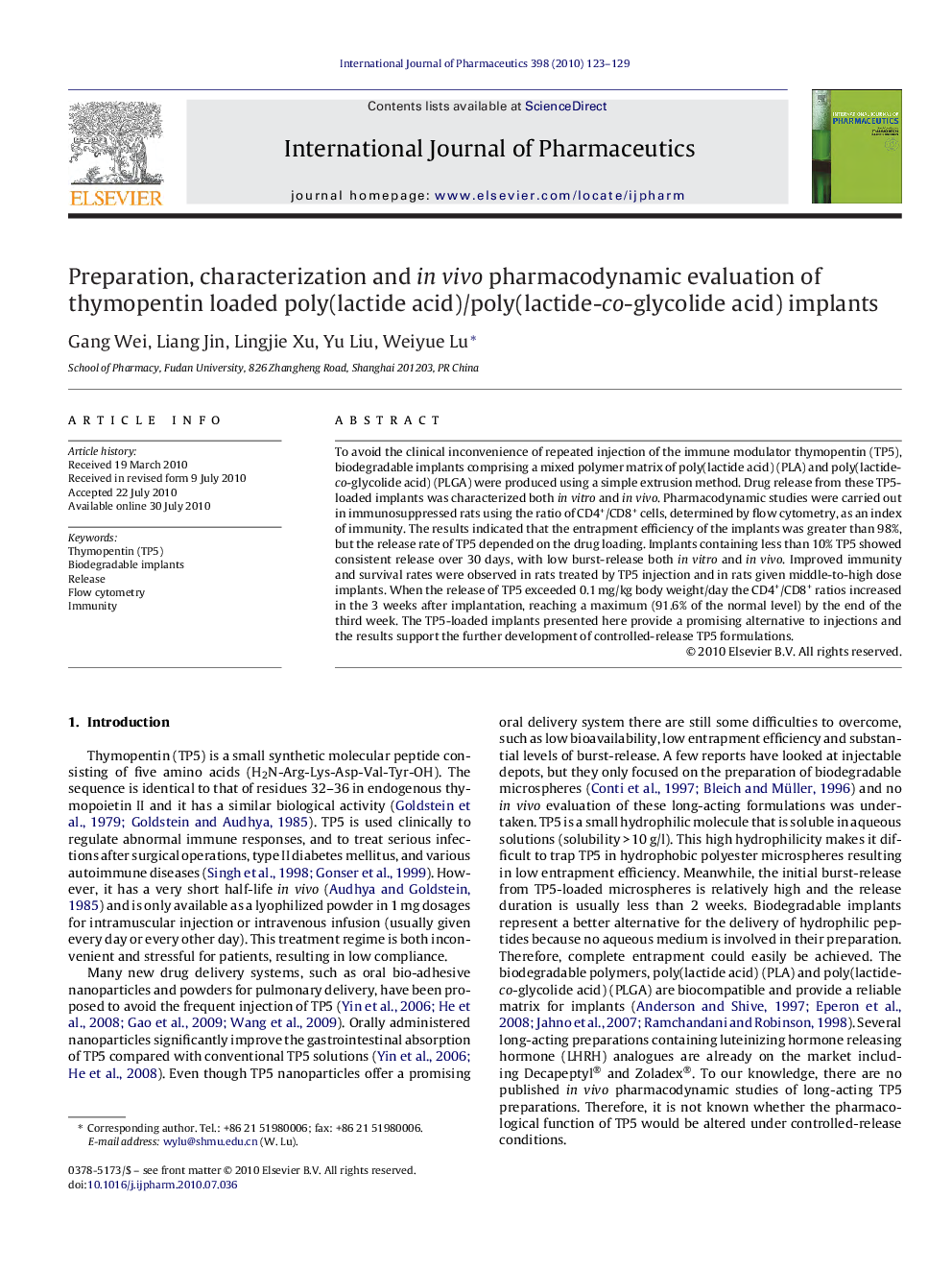| Article ID | Journal | Published Year | Pages | File Type |
|---|---|---|---|---|
| 2503929 | International Journal of Pharmaceutics | 2010 | 7 Pages |
To avoid the clinical inconvenience of repeated injection of the immune modulator thymopentin (TP5), biodegradable implants comprising a mixed polymer matrix of poly(lactide acid) (PLA) and poly(lactide-co-glycolide acid) (PLGA) were produced using a simple extrusion method. Drug release from these TP5-loaded implants was characterized both in vitro and in vivo. Pharmacodynamic studies were carried out in immunosuppressed rats using the ratio of CD4+/CD8+ cells, determined by flow cytometry, as an index of immunity. The results indicated that the entrapment efficiency of the implants was greater than 98%, but the release rate of TP5 depended on the drug loading. Implants containing less than 10% TP5 showed consistent release over 30 days, with low burst-release both in vitro and in vivo. Improved immunity and survival rates were observed in rats treated by TP5 injection and in rats given middle-to-high dose implants. When the release of TP5 exceeded 0.1 mg/kg body weight/day the CD4+/CD8+ ratios increased in the 3 weeks after implantation, reaching a maximum (91.6% of the normal level) by the end of the third week. The TP5-loaded implants presented here provide a promising alternative to injections and the results support the further development of controlled-release TP5 formulations.
